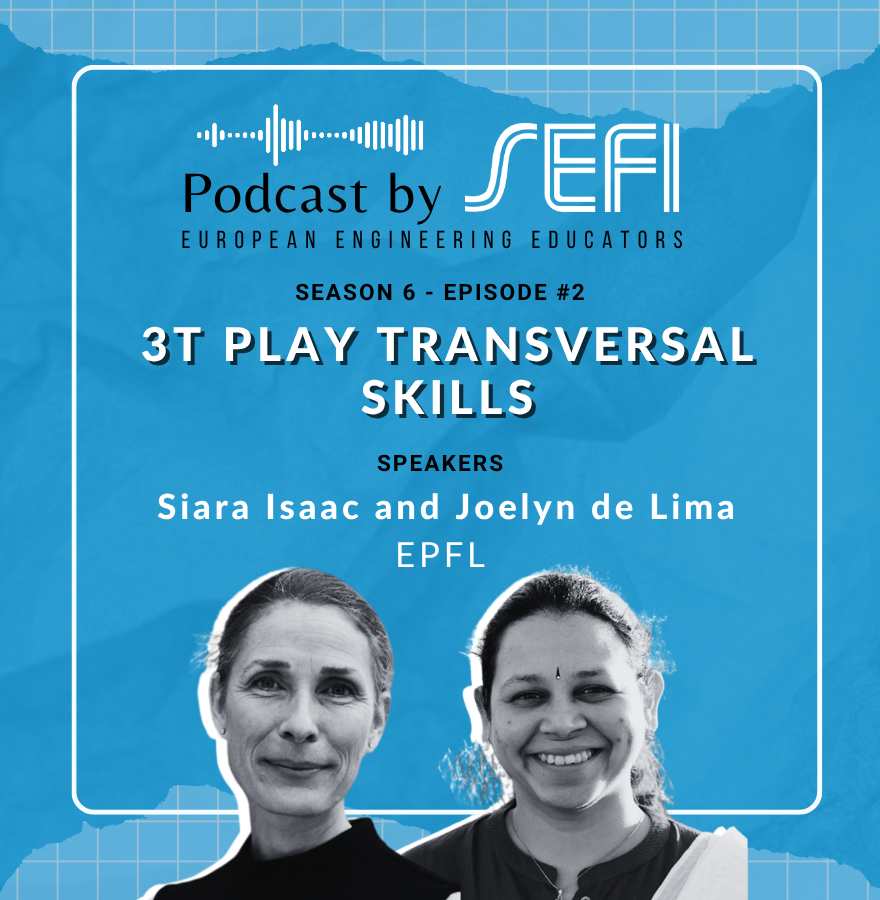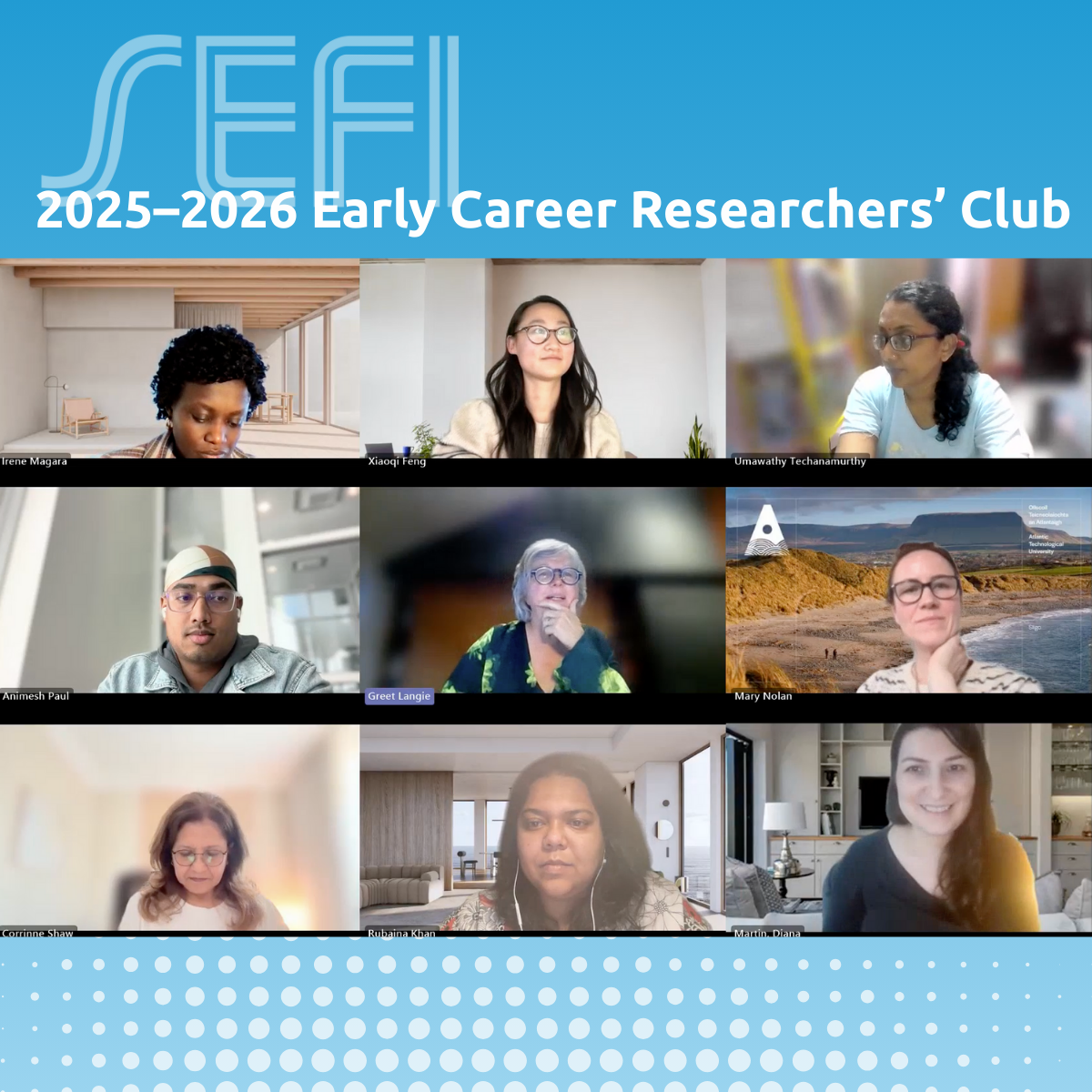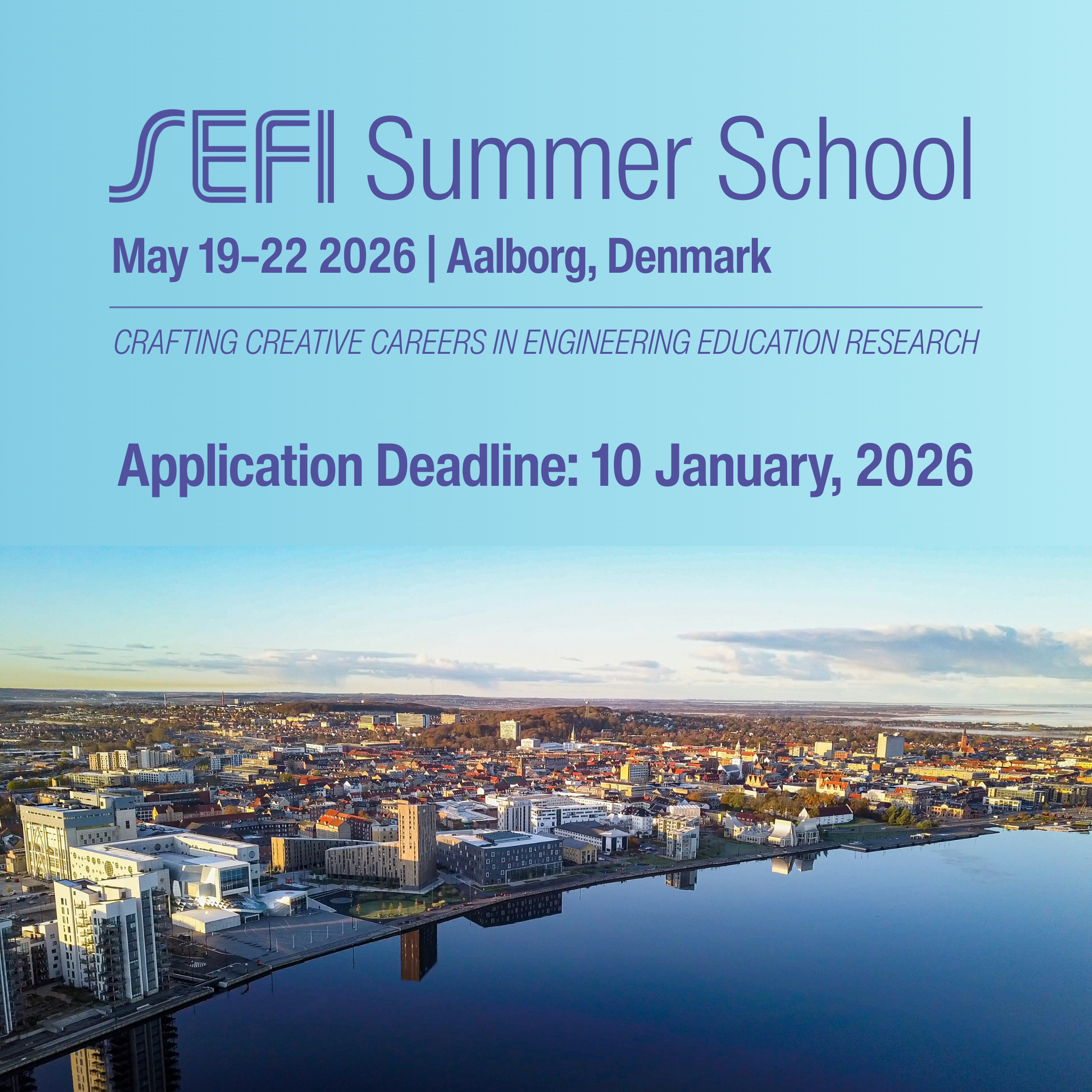The SEFI Early Career Researchers’ Club is a 9-month initiative designed to support and connect…
There continues to be a growing focus on the need for engineering students to develop transversal skills. There are a number of barriers which can stifle efforts in teaching such skills and approaches increasingly focus on developing engineering educators’ ability to integrate a diverse set of skills with technical knowledge.
In this episode we speak to Siara Isaac and Joelyn de Lima, part of the 3T Play project (funded by the Lego Foundation) team from Swiss Federal Institute of Technology in Lausanne (EPFL), who focused on the use of tangible objects and playfulness to support the learning process and support skills development.
Transversal skills
Joelyn explains that they define transversal skills by comparing them to disciplinary skills. Transversal skills thus cut across all disciplines, as well as career stages and educational stages.
The start of 3T Play
Joelyn explains that both engineering students and practicing engineers see the need for transversal skills. Although instructors see transversal skills as important, they can struggle to understand where they can be integrated or feel like they don’t have the necessary expertise required to teach them. Siara explains that, whereas previously the institution had tended to focus on skills at a programme level, this project focused on the individual instructor and what they were able to do in the class to support students in a scaffolded manner. She describes the iterative nature of developing activities generally and how the focus was primarily on skills that were underrepresented in current curricula.
Flaws in current teaching practices
Siara explains that instructors can sometimes assume that students will acquire skills because they need them in context (for example, students will learn collaboration skills because they are working in teams). However, she refers to evidence which shows that needing skills is not sufficient to actually develop them. Thus, the biggest issues in developing skills can be the lack of intentional scaffolding and support for skill development as opposed to using the skills. Other barriers include the cognitive load involved in learning different skills and new content simultaneously, and students’ focus on product over process. There are also long-time frames associated with the iterative loops involved in applying feedback. Finally, there are a lack of integrated opportunities for students to reflect on learning and how to improve.
Development of the Trident Model
The model was developed with consideration for current practice and exploring the literature. It includes three aspects or moments and is thus referred to as a Trident model.
Each of the three aspects of the 3T PLAY trident framework provides students with an important element for developing transversal skills.
Knowing: This component represents the factual knowledge and concepts that underpin a skill. For students to learn transversal skills, the conceptual knowledge about the transversal skills should be made explicit. This may involve teacher presentations, pre-readings or videos which are used to share information.
Experiencing: This involves opportunities for students to practice specific transversal skills being developed. Engineering programmes have many opportunities, which require students to use transversal skills. Experiencing moments in 3T PLAY activities are focused, low-risk opportunities to practice the relevant transversal skills with process level feedback (which can be transferred across contexts) and a chance to iterate. This component often takes the most time.
Learning from experience: This is the ultimate objective of an activity. Students should thus be able to transfer and implement the skills they practice in different future contexts by recognising situations that would benefit from specific strategies and successfully using the strategies. Reflection is a key mechanism for enabling transfer, allowing students to recognise patterns and causal relationships. The need for reflection should be made explicit.
Tangible objects
Joelyn explains that 3T PLAY activities employ tangible objects including Lego, pasta and play dough to create opportunities where students can implement their skills, for instance in collaborative design tasks.
Tangible objects are used widely to facilitate development of knowledge in science and engineering domains as they provide means for visualisation and manipulation to help students learn abstract concepts and principles. The use of the body in the process of learning, is supported by theories of embodied cognition that demonstrate that the body and the environment assist with integrating and retrieving knowledge.
Siara goes on to say that this can help students deal with the non-visible nature of skills. Although the tangible object is taken away at the end of a session, students keep the associated skill which goes forward with them. The product of the tasks is thus not important for students’ skill development, rather the 3T PLAY approach focuses on the skills implemented during the process of creating the product.
The use of tangibles supports the conditions necessary for the learning of transversal skills through: opportunities to practice the skills; playfulness; scalability; and externalised representation.
Conditions that support learning of transversal skills inform the 3T PLAY approach to designing activities.
- Use of less structured or more open-ended tasks that create scope for micro-experiential learning situations.
- Communicating clear learning objectives for transversal skills is a fundamental to enabling students to develop them. Our guests recommend (1) restricting the skills students are expected to learn from a given activity to a maximum of two, and (2) explicitly informing students about the intended learning objectives as part of the introduction.
- Developing new skills requires low-stakes (i.e. non-graded) opportunities for students to practise the skill, receive feedback, and try again. Feedback loops should be shorter than those typically encountered during a programme when students may encounter skills in different modules across different points of the degree.
- Students generally persist longer if the focus on growth. Activities can be designed for incremental improvement and should focus on the process of implementing the skills and not the quality of the final product or output of the work. Reflective prompts can also be used to examine difficulties and errors as learning opportunities.
- Employing transversal skills in conjunction with disciplinary skills and concepts increases cognitive load which may hinder students’ ability to apply their transversal skills. Simplified contexts using tangibles can therefore be used to replace disciplinary tasks.
- Students can have conceptual misconceptions about transversal skills, for example, that engineers should not display emotion. Our guests thus recommend directly addressing misconceptions.
An example
Siara provides an example of working with an instructor who wanted to support their students in improving students’ ability to provide feedback within team projects. This involved working out what students were struggling with which meant that they were not sharing feedback with one another. They discovered that they generally did not struggle with the cognitive side of and that they were provided with explicit scaffolding around structured feedback. Instead, it was the emotional aspects which students appeared to struggle with. An activity focused on emotional self-management was thus developed which incorporated specific strategies for managing emotions.
Flexibility
Our guests describe the flexible nature of activities which are experiential in nature and can thus be adapted to suit different contexts and levels (from undergraduates to professionals).
The book
Joelyn explains that the book produced as an output of the project has 8 chapters, with 6 focusing on different skills which each start with a brief description of the activity along with student outcomes. They also include a concise, but thorough section about the theoretical, conceptual and practical underpinnings of the activity, alongside relevant references. Finally, resources such as handouts and slides are provided, along with implementation advice.
The link to the open access resource can be found below:
Isaac, S., Jalali, Y., Petringa, N., Tormey, R., & Dehler Zufferey, J. (2023). Are Engineering Teachers Ready To Leverage The Power Of Play To Teach Transversal Skills? European Society for Engineering Education (SEFI). DOI: 10.21427/QP3D-B914
Baber, Christopher. Embodying design: An applied science of radical embodied cognition. Mit Press, 2022.



